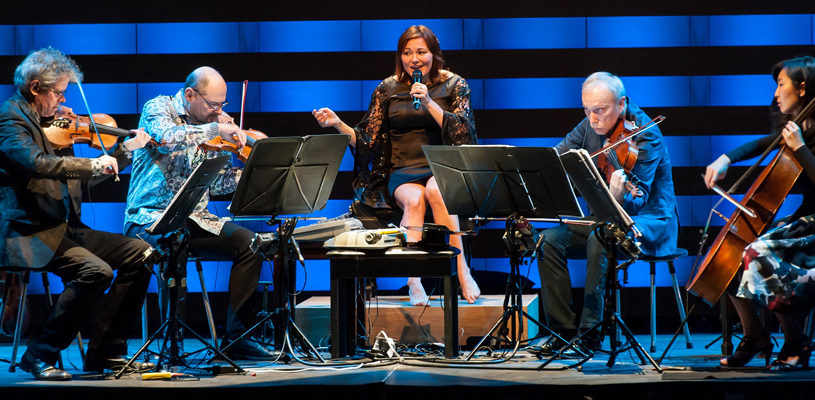5 ways to build a culture of belonging through arts and culture

It stands to reason that the shared experience of the arts provides a common ground for social interaction. One also could claim that art programs and facilities contribute to building a greater sense of belonging to our communities, to our country, and to each other. But, do we know for sure?
The Community Foundations of Canada, in partnership with the Canadian Arts Presenting Association, set out to explore the issue of community belonging, asking: How can we strengthen our sense of belonging to each other and to our communities? Their research confirmed: One of those ways is through the arts. Their national report provided hard evidence and a roadmap to deepening a community’s sense of belonging through arts and culture.
Seventy-seven percent of Canadians agree or strongly agree that arts experiences help people feel part of their local community. And, Canadians who rate arts, culture, and leisure in their city or town as “excellent” are nearly three times more likely to report a “very strong” sense of belonging. This link is particularly strong in rural areas and small villages. The quality of cultural and recreational programs is also a predictor of sense of belonging among Canadian-born and immigrant populations in mid-size cities.
The following five recommendations highlight ways for municipalities to to help people of all backgrounds feel more connected:
1. Strengthen public policy, planning, and funding
Municipal planners and policy makers must understand and value the many benefits that artists, arts organizations, and events bring to the community. Recognizing that a vibrant arts community is key to attracting and retaining people in the community – and in building belonging – arts and culture need to be fundamental components of city planning. Arts vision, strategies, priorities, and programs must be developed with community experts and practitioners. Long-term funding is needed to sustain high-quality arts programs and facilities. Finally, municipalities should collect data on arts activities and outcomes at a local level.
2. Support high-quality arts experiences
This research establishes a clear relationship between excellent arts and culture in the community and greater belonging. It suggests the need to focus not only on attendance or number of activities, but also on the quality of the experience. Objective indicators of quality are regularly used by arts funders, but they may not be easily accessible to municipalities. Short of such indicators, municipal authorities may defer to grant decisions by provincial and federal funders as an assurance of the quality of local artists and arts organizations.
3. Offer participatory arts programs
Community-engaged arts foster interpersonal connections between participants, with lead artists, and with the community. When community-engaged arts programs beautify the community through murals, mosaics, or installations, pride of place can also flourish. The and websites are two good resources to explore the range of community-engaged arts practices in Canada. Community-engaged arts programs deliver profound benefits to participants. These programs, however, offer few earned revenue possibilities for artists and arts organizations, and they can’t be scaled without financial support. This is an area where municipalities could step in.
4. Use the city as a stage
Site-specific performances, art walks, and neighbourhood arts impact how people relate to familiar spaces, create a sense of place, and foster a sense of attachment and belonging to the community. These activities are most often not ticketed, and cannot be sustained without public support. Municipalities should collaborate with local artists and arts organizations to program arts activities outside of traditional facilities.
5. Open arts facilities to the community
The foyers of performing arts venues are often underused during the day and could be used for non-arts programming provided by community and neighbourhood associations, or offered as co-working space. Libraries have made this shift and are becoming even more important community hubs.
As the research in this report shows, whether on stage, in the audience, or in the community, we now know for certain that participation in the arts leads to a greater sense of belonging. The arts are a catalyst for renewed cultural connection and understanding in communities across Canada.
Municipalities may use this new knowledge in a transversal manner to inform policy development in multiple areas: public health, settlement, social development and, of course, culture. MW
Frédéric Julien is Director of Research and Development at the Canadian Arts Presenting Association (CAPACOA). His various volunteer engagements include: co-chair of the Canadian Arts Coalition, board member of Arts Health Network Canada, and chair of his neighbourhood association in Gatineau. Frédéric recently co-authored two research reports: Digitizing the Performing Arts and Arts and Belonging.
A version of this article appeared in Municipal World, September 2017.



